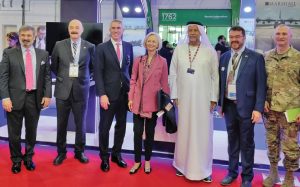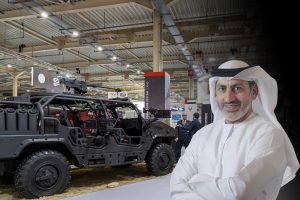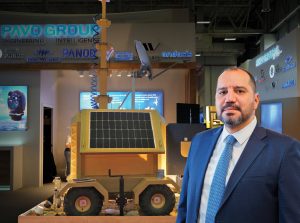Raytheon Missiles & Defense provides its clients in more than 50 countries around the world with advanced, comprehensive solutions that help them detect, track and intercept various threats. Raytheon Missiles & Defense’s solutions include a variety of air and missile defense systems, precision weapons, radars, command and control systems, and advanced defense technologies that help protect citizens, military forces as well as infrastructure.
Raytheon’s products hold a prominent position in various military sectors, especially regarding the Early Warning Radar (EWR), where it has proven its efficiency and strength in dealing with various threats.
To shed light on the EWR and explain its main missions as well as advantages and advanced technologies, Al-Jundi interviewed Mr. Matthew Krempin, Product Line Director for Early Warning pursuits within Raytheon Missiles & Defense, and had the following dialogue with him:
What distinguishes the Early Warning Radar (EWR) from other sensors?
EWR is the only radar in the world capable of sensing a Mass Raid of more than 1,000 objects simultaneously at a range of over 5,000km. Given the immense range and computational power, EWR has been the cornerstone of US nuclear deterrence for decades. It is the most powerful, proven early warning radar in the world.
What are the primary mission areas of the EWR?
The EWR performs four missions.
• Early warning and attribution: The EWR can warn of a missile threat and find its launch point up to 20 minutes before it happens. That creates a deterrent effect; adversaries know they are not hidden, even from far away, and that a retaliatory attack is possible.
• Integrated air and missile defense: As part of an integrated, layered missile defense architecture, EWR is the cornerstone sensor that provides persistent, 360-degree defense, and gathers precise tracking data and queues fire control radars and their effectors, improving overall national-level missile defense effectiveness.
• Space domain surveillance: Tactical Ballistic Missiles (TBMs) can have trajectories that enter Lower Earth Orbit (LEO), where there are thousands of objects. EWR is able to differentiate TBMs from satellites better than others, due to EWR’s long-range that allows horizon-to-horizon tracking to ensure threatening objects are addressed and non-threatening objects are not. With 6,000 satellites currently in orbit and that number expected to triple in the next 10 years, keeping satellites safe during commercial flights is also vital.
• Volume air surveillance and tracking: Commercial airspace is increasingly congested, making it especially important to tell the difference between friendly and adversary aircraft. The EWR makes that distinction while helping coordinate, communicate and prioritize threats.
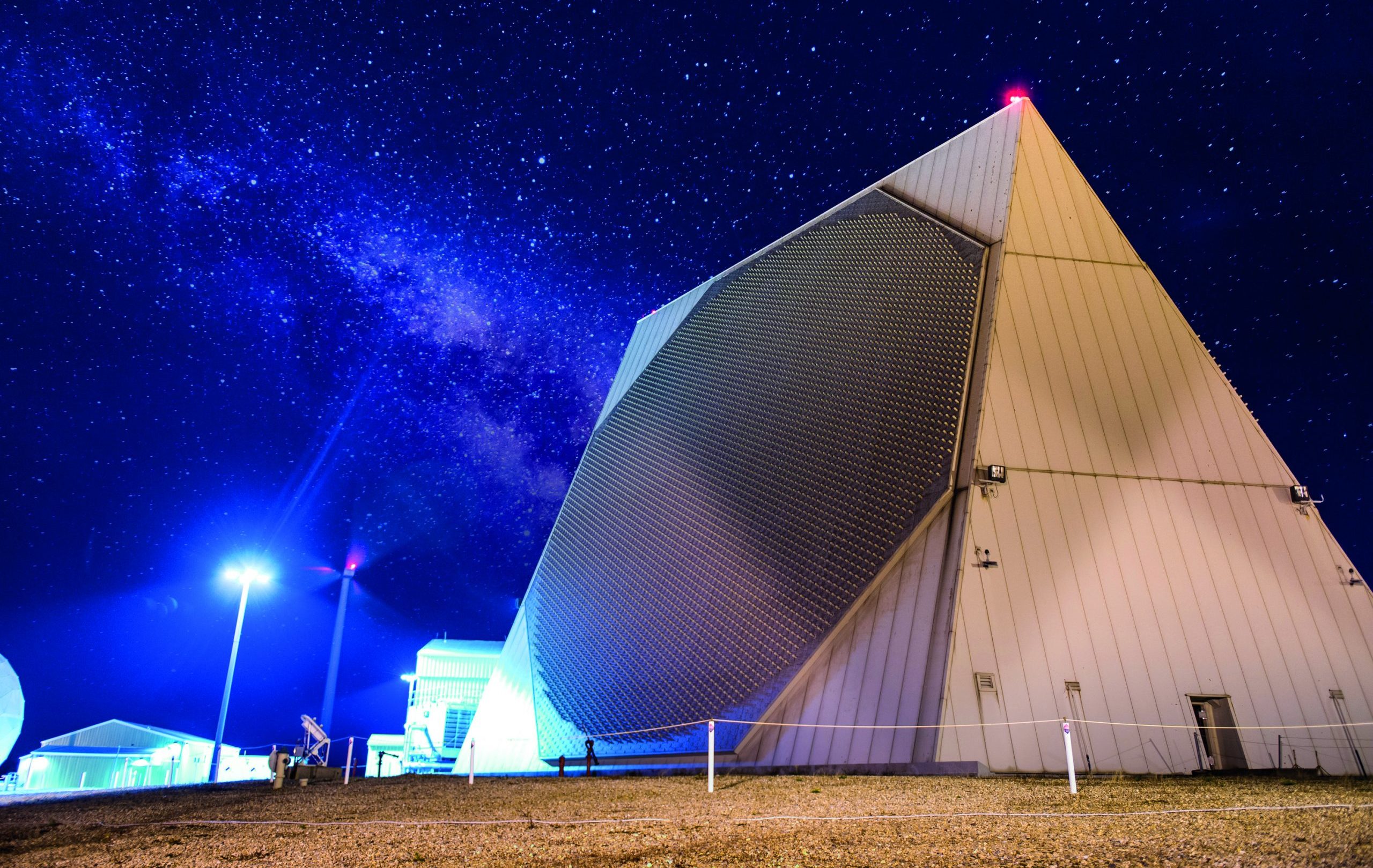
How does the EWR complement existing integrated air and missile defense assets in some countries today?
As a systems integrator, Raytheon Missiles & Defense has ensured EWR is interoperable with the AN/TPY-2 radar, Global Patriot Solutions, Lower Tier Air and Missile Defense Sensor, or LTAMDS, and the Terminal High Altitude Area Defense, or THAAD – and has done so in a cyber-hardened environment.
How well is the EWR suited for Middle Eastern countries?
It’s ideally suited for the Middle East. The EWR uses the ultra-high frequency band, or UHF, which offers several advantages over S-band radars, including the capability to simultaneously track and classify a greater number of targets. And they require a lot less power to operate. This makes EWR the perfect complement to existing assets in countries like the United Arab Emirates.
What recent upgrades have been made to the EWR?
The EWR has performed missile warning and missile defense missions in the United States for more than 25 years, and the U.S. along with allies have continually invested in the system to keep it ahead of emerging threats. One of those long-term investments is the solid-state transmit-and-receive module made with the powerful semiconductor gallium nitride or GaN. That module delivers more capability and better energy efficiency, lowering operational costs. Other advancements include software updates that improve surveillance, tracking, and object classification.
How does Raytheon intend to stay ahead of evolving threats – making use of the EWR’s exceptional capabilities?
Our Upgraded Early Warning Radars have been updated with Generation 2 software, which includes the installation and integration of: new data, signal, display and control processors, the latest information assurance and cyber security protocols, Improvements to the mission application and signal processing software, New network and external communication systems. Software upgrades ensure that EWRs continue to be capable of tracking and detecting evolving threats.
Just recently, Raytheon coupled the AN/FPS-132 Early Warning Radar (EWR) and the Army Navy/ Transportable Radar Surveillance and Control Model 2 (AN/TPY-2) Radar. What advantages does the new combination provide?
The AN/FPS-132 Early Warning Radar (EWR) casts a wide-area net, and the Army Navy/ Transportable Radar Surveillance and Control Model 2 (AN/TPY-2) Radar delivers the most precise discrimination possible. Both are built by Raytheon Missiles & Defense. Though they work very well independently, integrating both radars takes full advantage of the differences in them in terms of where and how they detect objects.
The EWR identifies and keeps track of all objects, even in Mass Raids.
Then, the EWR queues TPY-2 to look in exactly the right spot to neutralize the threat.
That combination delivers more robust detection and resilience, particularly in environments where there may be issues in seeing and identifying the threat.
How does Raytheon plan to expand the use of artificial intelligence in various technologies, particularly radars?
Raytheon Missiles & Defense continues to be on the cutting edge of defense technologies such as mission engineering, digital technology, and more. Raytheon Missiles & Defense breakthrough technologies enable sensors to see farther. They mean command-and-control systems can process data faster and that operators can employ interceptors to engage their targets with even greater precision. Deployed around the world and drawing on the company’s decades-long dedication to reliability and readiness, these integrated technologies are helping the U.S., its friends and allies make the world a safer place.
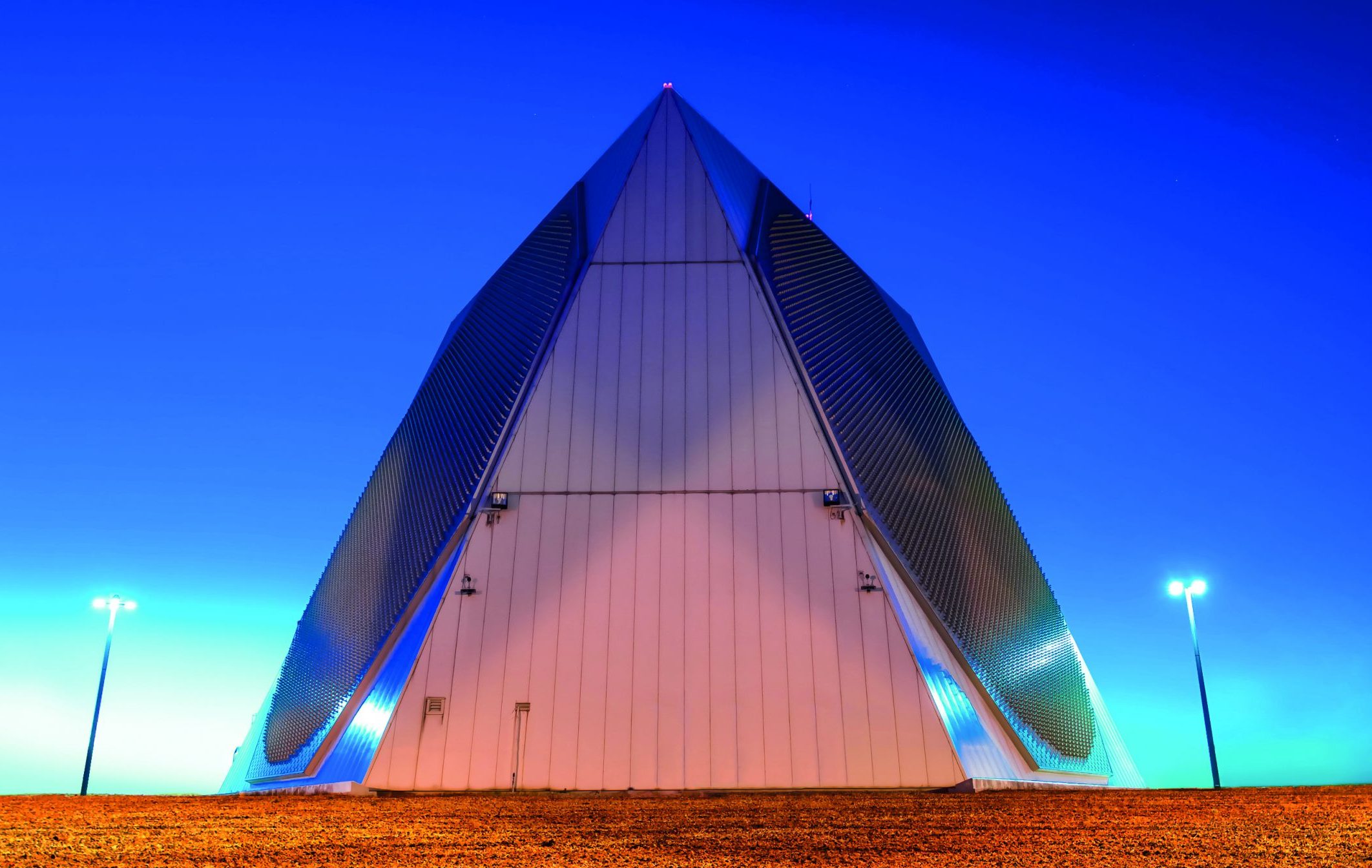
How do you describe the EWR in three words?
• Persistent – EWRs are uniquely designed and fielded for nearly 100% Operational Availability, always able to identify inbound threats and queue existing in-country assets.
• Complementary – Middle East countries already possess the best discrimination capability in the world with their AN/TPY-2 radars. To close mission gaps in Early Warning and to improve coverage and effector efficiency in Integrated Air and Missile Defense, EWR’s UHF-band frequency allows for maximum range and minimum cost, All at a level that no S-band sensor can approach.
• Interoperable – EWR supports missions as part of an integrated solution, leveraging existing in-country assets. RTX has proven, fielded, cyber-hardened command and control systems that already connect to PATRIOT and THAAD. This connectivity allows for system-of-systems level synergies like queueing, engage-on-remote, and optimized effector assignment.
Tell us more about RMD’s presence in the UAE?
RMD and its parent company Raytheon Technologies have enjoyed an enduring relationship with the UAE for over three decades. This relationship took an important step forward in 2017 with the establishment of Raytheon Emirates in Abu Dhabi. By working closely with our partners and customers, we continue to contribute to the UAE’s manufacturing and supplier ecosystem, supporting the nation’s long-term economic diversification goals, and strengthening indigenous defense capabilities.
What message would you like to send to the defense community in general, or in the UAE in particular – through Al-Jundi Journal?
We are committed to developing a local defense capability in the UAE by supporting localized manufacturing, continually sustaining and upgrading the existing defense systems operated by the UAE, and growing Emirati professional talent.
PROFILE:

- Joined Raytheon in 2006 and held several positions in it.
- Product Line Director for Early Warning pursuits within Raytheon Missiles & Defense, a Raytheon Technologies business.
- Received a bachelor’s degree in mechanical engineering from the United States Military Academy at West Point, a master’s degree in electrical engineering from the University of Massachusetts, Amherst, and is a current member of IEEE.
» Interviewed by: «Al Jundi»






